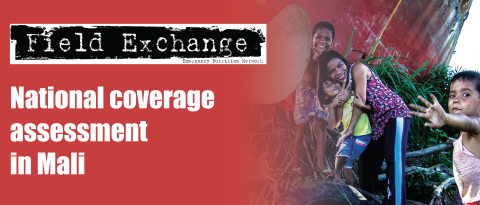Prevalence, clinical predictors, and outcome of hypocalcaemia in severely malnourished children in urban Bangladesh
Summary of review1
Location: Bangladesh
What we know: Severely malnourished children are depleted in electrolytes. Therapeutic milks contain calcium, however there is no WHO recommendation for calcium supplementation in treatment.
What this article adds: Hypocalcaemia may cause seizures and death, especially in severely malnourished children. A case control study (n=333) to evaluate the prevalence, clinical predicting factors and outcomes of hypocalcaemia in SAM children in an urban hospital in Bangladesh was undertaken over 1 year. The prevalence of hypocalcaemia among severely malnourished under-fives was 26% and the case fatality rate was significantly higher than in the controls (17% vs 5%). Acute watery diarrhoea (AWD), convulsion, and lethargy assessed on admission to hospital were identified as clinical predictors of hypocalcaemia in such children; these signs should alert clinicians.
With the exception of sodium, children with severe acute malnutrition (SAM) have deficiencies of total body electrolytes, such as potassium, magnesium and calcium. The World Health Organisation (WHO) recommends the routine use of potassium and magnesium supplementation for SAM but there is no recommendation for calcium supplementation, although F-75 (stabilisation phase) and F-100 (rehabilitation) both contain 320 mg calcium per litre. Hypocalcaemia is often associated with serious consequences, such as seizures and death, especially in children with severe malnutrition. Clinical manifestations of hypocalcaemia in SAM children are often subtle due to reduced muscle power and overlap with the clinical signs of hypokalaemia and hypomagnesaemia. In addition, hypomagnesaemia is often associated with hypocalcaemia, leading to fatal seizure in children. Thus, the lack of supplementation of calcium in children with severe malnutrition may impede and/or delay recovery. A better understanding of the predictors of hypocalcaemia in this population may improve the use of calcium and simultaneously, may help reduce hypocalcaemia-related morbidity and mortality, especially in resource poor settings. There is a lack of published data on the prevalence, clinical predictors and outcomes of hypocalcaemia in SAM children.
The objectives of a recently published study were to evaluate the prevalence, clinical predicting factors and outcomes of hypocalcaemia in SAM children in an urban hospital in Bangladesh. This study was a case-control study with all severely malnourished under-five children (n=333) admitted to the Longer Stay Ward (LSW), High Dependency Unit (HDU) , and Intensive Care Unit (ICU) of the Dhaka Hospital of ICDDR,B2 between April 2011 and April 2012, who had their total serum calcium estimated, and were enrolled. Those who presented with hypocalcaemia (serum calcium <2.12 mmol/L) constituted the cases (n=87), and those admitted without hypocalcaemia (n=246) constituted the control group in the analysis. The prevalence of hypocalcaemia among severely malnourished under-fives was 26%. The fatality rate among cases was significantly higher than that in the controls (17% vs 5%; p<0.001).
Using logistic regression analysis, after adjusting for potential confounders, such as vomiting, abdominal distension, and diastolic hypotension, the researchers identified acute watery diarrhoea (AWD) (OR 2.19, 95% CI 1.08-4.43, p = 0.030), convulsion on admission (OR 21.86, 95% CI 2.57-185.86, p= 0.005), and lethargy (OR 2.70, 95% CI 1.633-5.46, p 0.006) as independent predictors of hypocalcaemia in severely malnourished children. The main limitation of the study identified by the authors was the lack of measurement of ionized calcium, which is a more accurate reflection of the physiological calcium state.
Table 1 Results of logistic regression to explore the independent clinical predictors of hypocalcaemia in under-five children with severe acute malnutrition |
|||
Predictor |
OR |
95% CI |
p value |
|
Acute watery diarrhoea (AWD) |
2.19 |
1.08-4.43 |
0.030 |
|
Convulsion |
21.86 |
2.57-185.68 |
0.005 |
|
Lethargy |
2.70 |
1.33-5.46 |
0.006 |
|
Vomiting |
1.95 |
0.95-4.01 |
0.071 |
|
Abdominal distension |
1.54 |
0.72-3.28 |
0.264 |
|
Diastolic blood pressure |
0.99 |
0.97-1.01 |
0.323 |
The study authors concluded that severely malnourished children presenting with hypocalcaemia have an increased risk of death compared to those without hypocalcaemia. AWD, convulsion, and lethargy assessed on admission to hospital are the clinical predictors of hypocalcaemia in such children. Presence of these features in hospitalised children with SAM should alert clinicians about the possibility of hypocalcaemia and may help undertake potential preventive measures, such as calcium supplementation, in addition to other aspects of management of such children, especially in resource-poor settings.
1 Chisti. M et al (2014). Prevalence, Clinical Predictors, and Outcome of Hypocalcaemia in Severely-malnourished Under-five Children Admitted to an Urban Hospital in Bangladesh: A Case-Control Study. Journal of Health Population and Nutrition. Volume 32, Number 2, pp 270-275, June 2014
2An international health research organisation located in Bangladesh. See: http://www.icddrb.org/


